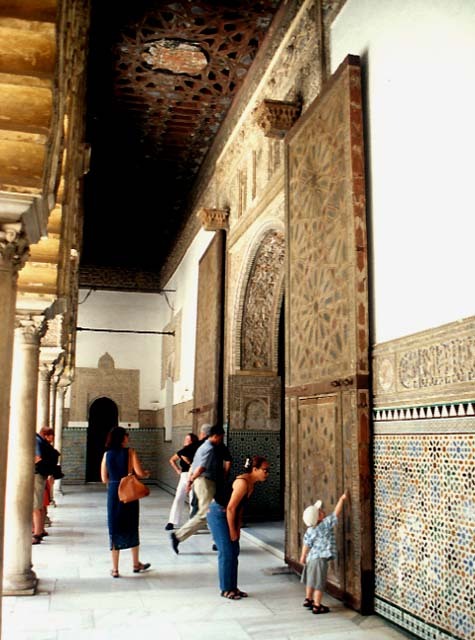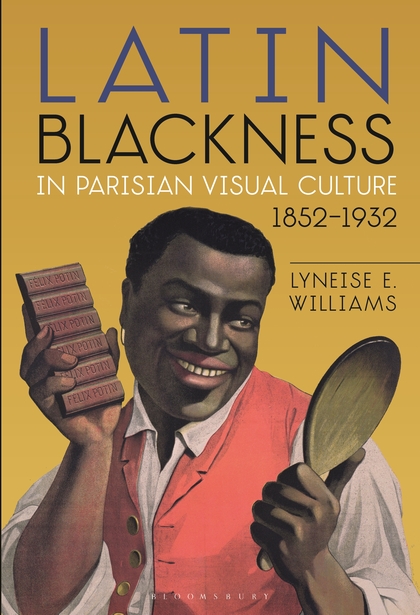The following post was written for an invited social media guest residency for the School of History of Art at the University of Edinburgh
An open letter to students in the School of History of Art, University of Edinburgh
In the wake of the Black Lives Matter protests in the US and around the globe, I took part in a discussion with some of you about where the School of History of Art stands on the BLM movement and systemic racism, and on equality, diversity, and inclusion. I want to continue that conversation here, and I want to thank those students for initiating it. I’m going to speak about my background and experiences as a mixed BAME scholar, which as a group represents a small fraction (around 1.2%) of UK academia. This is not something I would have considered doing before, but students have said hearing directly from BAME members of our community is important to them and I understand the significance of visibility. People come to Higher Education with varied backgrounds and experiences. Acknowledging this diversity and its implications is part of the anti-racist work necessary to make universities more just, inclusive, and equitable.
I’m from the Philippines, which has a complicated history of Spanish and Anglo-American colonialism. My father is white and was in the US military. I’m shaped by those national and transnational histories and by legacies of empire and war. I’m the first person in my immediate family to go to graduate school and the first to get a PhD. When we moved to the US, after living in the Philippines and then in Italy, where my dad was stationed, I didn’t fit in at all in our small rural town. I looked different, I sounded different. As a kid at school I got used to being asked: “Are you Oriental?” and “Are you mixed?” And I felt different. I was geeky, I didn’t care about American football, and my family and I didn’t have a long history in that place. We didn’t have money. But my parents passed on their love of reading to me very early and that made the difference. I read. A lot. I spent all my free time in the library reading. Jane Austen novels, the Epic of Gilgamesh, the Rubaiyat of Omar Khayyam, all the Tolkien, Dante’s Inferno … you get the picture.
I’m a product of a public school system that was probably ranked near the bottom in the US, academically, at that time. But my parents believe deeply in the power of education and they passed that on to me. I also had excellent teachers who represented diversity in our community and who supported and inspired me. I knew that I would go to university, but also that I would probably have to pay for it myself. When I did go to university I didn’t go away to a prestigious institution, even though I would have liked to. Instead I went to the small state university in my hometown, because I could live at home and work to pay tuition. You might have read about the law professor who used her legal expertise to educate students who criticised her Black Lives Matter t-shirt. I’m proud to say she’s an alum of my old alma mater. I had excellent professors at that university. They and many others in my family and in my community inspired and supported me.
My doctoral program was my first experience at an elite private institution. It was a difficult transition. Academically, I didn’t feel adequately prepared – becoming an art historian, let alone a historian of Islamic art, was not something I’d planned to do as an undergrad, or even as a postgrad, at first. But I felt at home in my doctoral institution because I was surrounded by immigrants who all came from outside the US. I no longer stood out for the way I looked or spoke. That was an amazing feeling, but I still didn’t quite fit in because by that point I was also a new parent with a 4-month old baby. For the first year or two I literally thought I was the only postgrad parent in the entire institution, which was difficult and isolating. But I did it with the support of my family. My mom left her small business to live with us for my first semester, to care for our son since my husband was also continuing his studies at the time. When she went home, he put his aspirations on hold to become a full-time at home dad, an experience so important for the three of us that there’s no way I can do it justice here. Our parents supported us in every conceivable way. Our families and friends cheered us on. Their support made it possible for me to not only be in that doctoral program but to thrive there.

© Glaire Anderson (CC BY-NC 4.0)
I took the photo above twenty years ago, during my first research trip as a PhD student. It shows the Islamic visual language of a medieval palace in Seville, in Spain, with people providing a sense of scale. The two in the foreground are my mom and my son, who was not quite two years old at the time. She is leaning over to look at the Arabic inscription that he was pointing out. To our amusement he announced confidently that he could read the inscription, and that it said “Keep off the grass” – an unexpectedly intertextual reading based on one of his favorite books at the time!
I’m a historian of medieval Islamic art and architecture, a field that grew out of, and was an active agent in, colonial systems, with all the difficult and problematic issues that entails. I know that simply by being part of the academy I am a part of unjust systems of oppression and exclusion. But I also know that my work as an art historian has been shaped by my perspectives as a cis-female-introverted-parent-mixed-BAME-immigrant from a working-class family. I’ll say more about that in my next two posts for this social media residency.
In the wake of the BLM protests my broader academic communities have spoken out against the systemic injustices that recent tragedies have laid bare. It’s important and it means a lot to me that these groups have taken an open and a clear stance in support of anti-racism and the hard work required from all of us to make a more just, equitable, and diverse academy. Here are their statements:
Middle East Medievalists Statement on Anti-Racism
Seeing the protests around statues and monuments here in Edinburgh and around the UK, I think about debates that have raged across the US. Before coming to Edinburgh I spent more than a decade teaching at one of the oldest public research universities in the US. In 2017 the Art History faculty wrote an open letter to the Chancellor, asking the university to remove the statue of a Confederate soldier, known as ‘Silent Sam’, from its prominent place on campus. The university administration chose not to support that effort, but students and other protesters kept up the pressure and eventually removed the statue themselves in 2018. Last month the Society of Architectural Historians, a group I have a long relationship with, released this statement supporting the removal of Confederate monuments, which I recommend reading along with Dell Upton’s 2017 blog post, written in the wake of the tragedies at Charlottesville (where I began my postgrad studies in History of Architecture).
To return to my work here in Edinburgh – I hope you’ve had a chance to look at our School’s Diversifying Art History reading list. Collaborating on this list with my colleagues was rewarding and I hope it will be a useful resource for anyone who wants to explore how and why Art History matters for issues that the BLM movement raises.

I want to end this post by pointing out two items I added to our reading list: Lyneise Williams’ Latin Blackness in Parisian Visual Culture 1852-1932 (Bloomsbury, 2019) and her new interdisciplinary project, VERA (Visual Electronic Representations in the Archive) Collaborative. VERA is the first collaborative of art historians, archivists, librarians, researchers, engineers, and computer scientists working to build innovative and responsible archival practices around the visual and material cultures of communities of color. This book and this project, which has enormous implications for museums, archives, and collections, represent for me some of the most exciting and important work on race and ethnicity in the field right now.
I hope you’ll read the book, check out the website, explore the reading list, and find inspiration for your own work as art historians.

